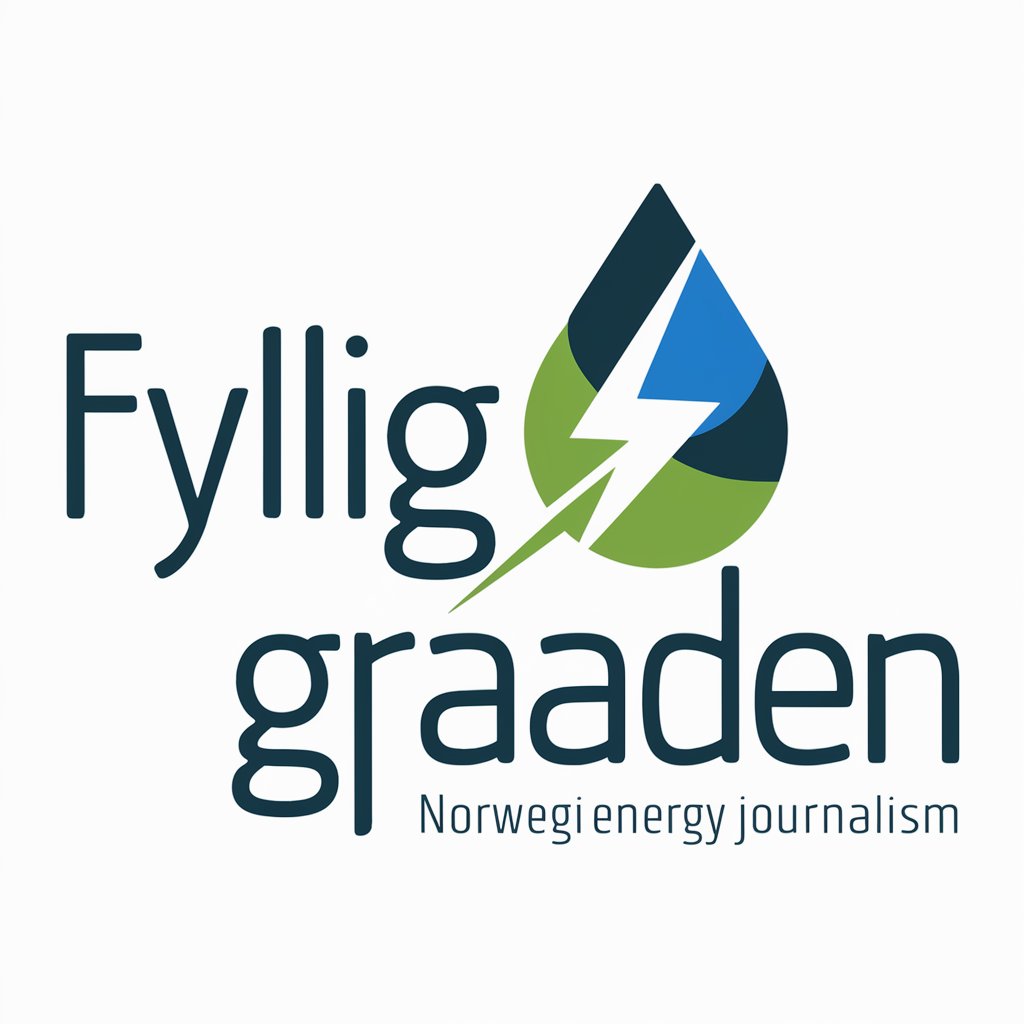Fyllingsgraden - Reservoir Level Insights

Welcome to Fyllingsgraden, your source for detailed updates on Norway's water reservoir levels.
Harness AI to track Norway's energy potential
Analyze the latest water reservoir levels in Norway and discuss their impact on hydroelectric power production.
Explain the weekly changes in water reservoir levels across the five regions of Norway.
Provide a detailed report on the current water reservoir capacity and filling levels in Norway.
Discuss the implications of the current reservoir levels for Norway's energy supply.
Get Embed Code
Overview of Fyllingsgraden
Fyllingsgraden is a specialized tool designed for reporting and analyzing the weekly reservoir levels in Norway's water storage facilities, crucial for energy production. Created to cater to the needs of journalists, researchers, and professionals in the energy sector, it focuses on providing precise, up-to-date information on water reservoir fillings. By leveraging data from Norges vassdrags- og energidirektorat (NVE), Fyllingsgraden interprets and communicates the implications of these levels on power production, offering insights into seasonal trends, potential energy supply challenges, and opportunities for the energy market. An example scenario illustrating its purpose could be a journalist drafting an article on how the current reservoir levels compare to the historical averages and what this means for Norway's hydroelectric energy output in the coming months. Powered by ChatGPT-4o。

Core Functions of Fyllingsgraden
Weekly Reservoir Level Updates
Example
Providing the latest fyllingsgrad (reservoir filling percentage) for the entire country and by regions (NO1, NO2, NO3, NO4, NO5).
Scenario
A journalist uses these updates to inform a news article on current energy production capabilities and potential impacts on electricity prices.
Historical Data Analysis
Example
Comparing current reservoir levels with historical data to identify trends or anomalies.
Scenario
An energy analyst examines past and present fyllingsgrad data to predict future energy supply and demand, aiding in market strategy development.
Implications for Power Production
Example
Analyzing how the current reservoir levels affect Norway's hydroelectric power production.
Scenario
A policy maker reviews the analysis to understand the potential need for regulations or incentives to ensure energy security and sustainable resource management.
Target Users of Fyllingsgraden
Journalists and Media Professionals
Individuals in the media who cover energy, environment, and economic sectors, seeking to provide accurate, timely information on Norway's energy reservoir levels and their implications.
Energy Analysts and Researchers
Professionals analyzing energy markets, trends, and policies, who require detailed data on hydroelectric power potential and reservoir levels to inform their research and forecasts.
Policy Makers and Government Officials
Decision-makers in the energy sector who need to understand the current state of water reservoirs to develop informed policies and strategies for sustainable energy production and management.

How to Use Fyllingsgraden
1
Start by visiting yeschat.ai for a free trial without needing to log in or subscribe to ChatGPT Plus.
2
Select the Fyllingsgraden tool from the list of available tools to begin analyzing reservoir levels in Norway.
3
Input your specific questions or data requests related to the water reservoir levels or energy production implications.
4
Review the detailed, data-driven responses provided by Fyllingsgraden for accurate and up-to-date information.
5
Utilize the insights for academic research, energy market analysis, or policy development for optimized decision-making.
Try other advanced and practical GPTs
SDR Leadership Advisor
Empowering SDR Leaders with AI-driven Insights

Market Connect AI
Empowering agricultural market decisions with AI

What's CROSSVALUE Chain?
Empowering Innovation with AI-Driven Blockchain

Super DM Generator
Craft personalized messages with AI power.

CosplayAIs『ツンデレAI -アスカ-』
Interact with your favorite tsundere, Asuka, through AI.

初号機 レイ Cyber Security Analyst
AI-powered Cyber Security Guidance

Fight Machine Game
Craft, battle, and strategize with AI-powered machines.

互联网黑话翻译菌
Decoding internet slang, one phrase at a time.

Consultor SEO
Optimize smarter, rank higher.

Agent Passé Colonial 🇧🇪
Unlocking Colonial History with AI

ファンタジーガイド
Explore the world through whimsical tales.

Arztbriefe Assistant
Streamlining Medical Documentation with AI

Fyllingsgraden Q&A
What exactly is Fyllingsgraden?
Fyllingsgraden is a specialized tool designed to report and analyze weekly filling levels of water reservoirs in Norway, crucial for understanding energy production capacities.
How often is the data updated?
The data is updated weekly every Wednesday at 13:00, ensuring users have access to the most recent information regarding reservoir levels.
Can Fyllingsgraden predict future reservoir levels?
While Fyllingsgraden provides current data and historical trends, it does not predict future reservoir levels but aids in understanding potential trends.
Is Fyllingsgraden useful for energy market analysts?
Absolutely, energy market analysts can leverage the detailed reservoir data for comprehensive market analysis, trend spotting, and decision-making.
How can students or researchers benefit from Fyllingsgraden?
Students and researchers can use Fyllingsgraden to gather accurate and up-to-date data on water reservoir levels for academic papers, theses, or energy research projects.
